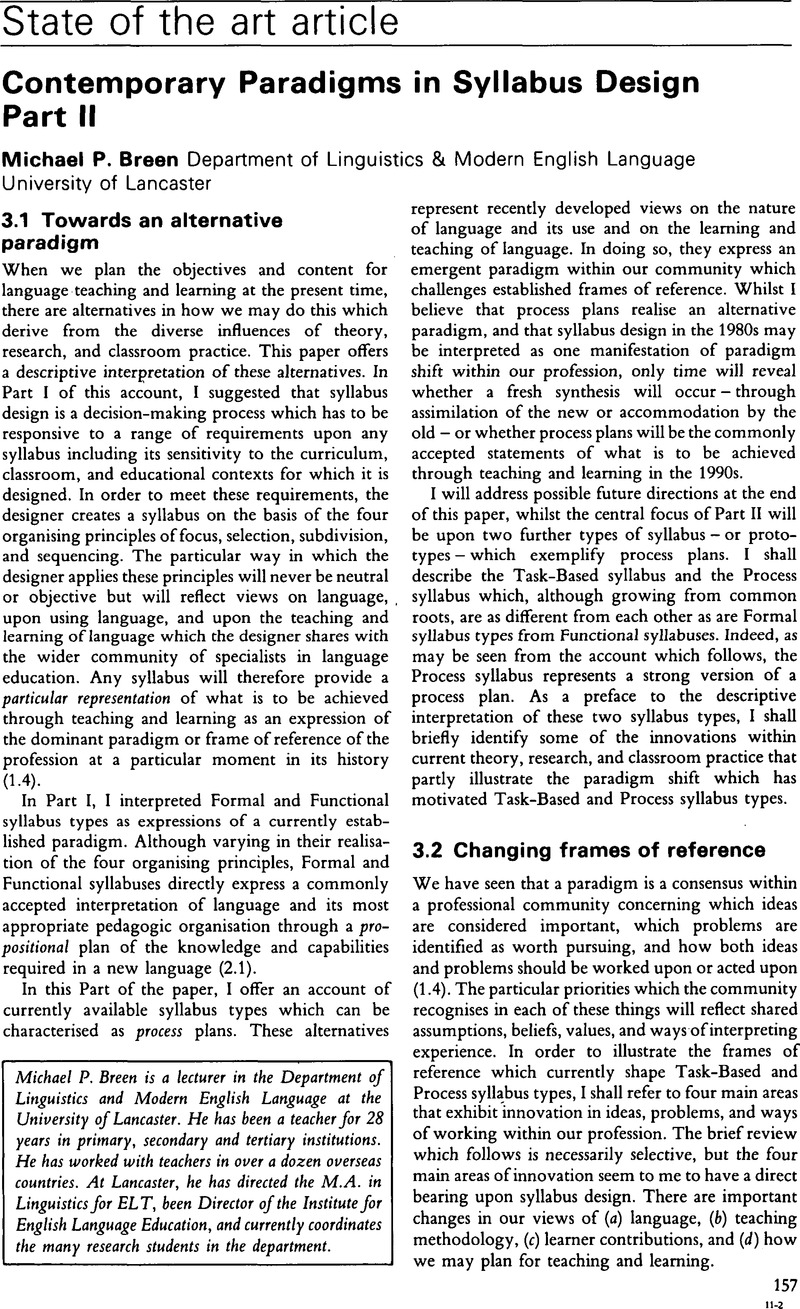Crossref Citations
This article has been cited by the following publications. This list is generated based on data provided by Crossref.
Rado, Marta
and
Reynolds, Chris
1989.
Applied linguistics as a framework for selection in syllabus design and assessment.
Australian Review of Applied Linguistics,
Vol. 12,
Issue. 1,
p.
138.
Rubdy, Rani
1989.
Maximizing Intrinsic Relevance in Teacher Education in ELT.
RELC Journal,
Vol. 20,
Issue. 2,
p.
10.
Flowerdew, John
1990.
Problems of Speech Act Theory From an Applied Perspective*.
Language Learning,
Vol. 40,
Issue. 1,
p.
79.
Foley, Joseph A.
1990.
Task‐based approaches to language learning from the learner's point of view.
Language and Education,
Vol. 4,
Issue. 2,
p.
81.
Crookes, Graham
1990.
DESIGNING TASKS FOR THE COMMUNICATIVE CLASSROOM. David Nunan. Cambridge: Cambridge University Press, 1989. Pp. x + 211..
Studies in Second Language Acquisition,
Vol. 12,
Issue. 4,
p.
455.
Hyland, Ken
and
Hyland, Fiona
1992.
Go for gold: Integrating process and product in ESP.
English for Specific Purposes,
Vol. 11,
Issue. 3,
p.
225.
Artigal, Josep Maria
1992.
Some considerations on why a new language is acquired by being used.
International Journal of Applied Linguistics,
Vol. 2,
Issue. 2,
p.
221.
Flowerdew, John
1993.
Concordancing as a tool in course design.
System,
Vol. 21,
Issue. 2,
p.
231.
Vez, José Manuel
1993.
Acerca de las razones o sinrazones de conjugar el verbocommunicateenunaEuropain linguis multis.
Comunicación, Lenguaje y Educación,
Vol. 5,
Issue. 19-20,
p.
131.
Kenny, Brian
1993.
For more autonomy.
System,
Vol. 21,
Issue. 4,
p.
431.
Fulcher, Glenn
1995.
Variable competence in second language acquisition: A problem for research methodology?.
System,
Vol. 23,
Issue. 1,
p.
25.
Rijlaarsdam, Gert
and
Couzijn, Michel
2000.
New Learning.
p.
157.
Bruton, Anthony
2005.
Task-based language teaching: For the state secondary FL classroom?.
The Language Learning Journal,
Vol. 31,
Issue. 1,
p.
55.
Adams, Rebecca
2006.
L2 Tasks and Orientation to Form.
ITL - International Journal of Applied Linguistics,
Vol. 152,
Issue. ,
p.
7.
Wette, Rosemary
2009.
Making the instructional curriculum as an interactive, contextualized process: case studies of seven ESOL teachers.
Language Teaching Research,
Vol. 13,
Issue. 4,
p.
337.
Andon, Nick
and
Eckerth, Johannes
2009.
Chacun à son gout? Task‐based L2 pedagogy from the teacher's point of view.
International Journal of Applied Linguistics,
Vol. 19,
Issue. 3,
p.
286.
Seedhouse, Paul
and
Almutairi, Saad
2009.
A holistic approach to task‐based interaction.
International Journal of Applied Linguistics,
Vol. 19,
Issue. 3,
p.
311.
Ogilvie, Greg
and
Dunn, William
2010.
Taking teacher education to task: Exploring the role of teacher education in promoting the utilization of task-based language teaching.
Language Teaching Research,
Vol. 14,
Issue. 2,
p.
161.
Xie, Jie
and
Zhang, Genlin
2012.
ELT Teachers’ Role Within E-Learning and Communicative Teaching from Students’ Perceptions.
Creative Education,
Vol. 03,
Issue. 07,
p.
158.
Ahmadian, Mehrshad
and
Rad, Saeedeh Erfan
2014.
Postmethod Era and Glocalized Language Curriculum Development: A Fresh Burden on Language Teachers.
Journal of Language Teaching and Research,
Vol. 5,
Issue. 3,





